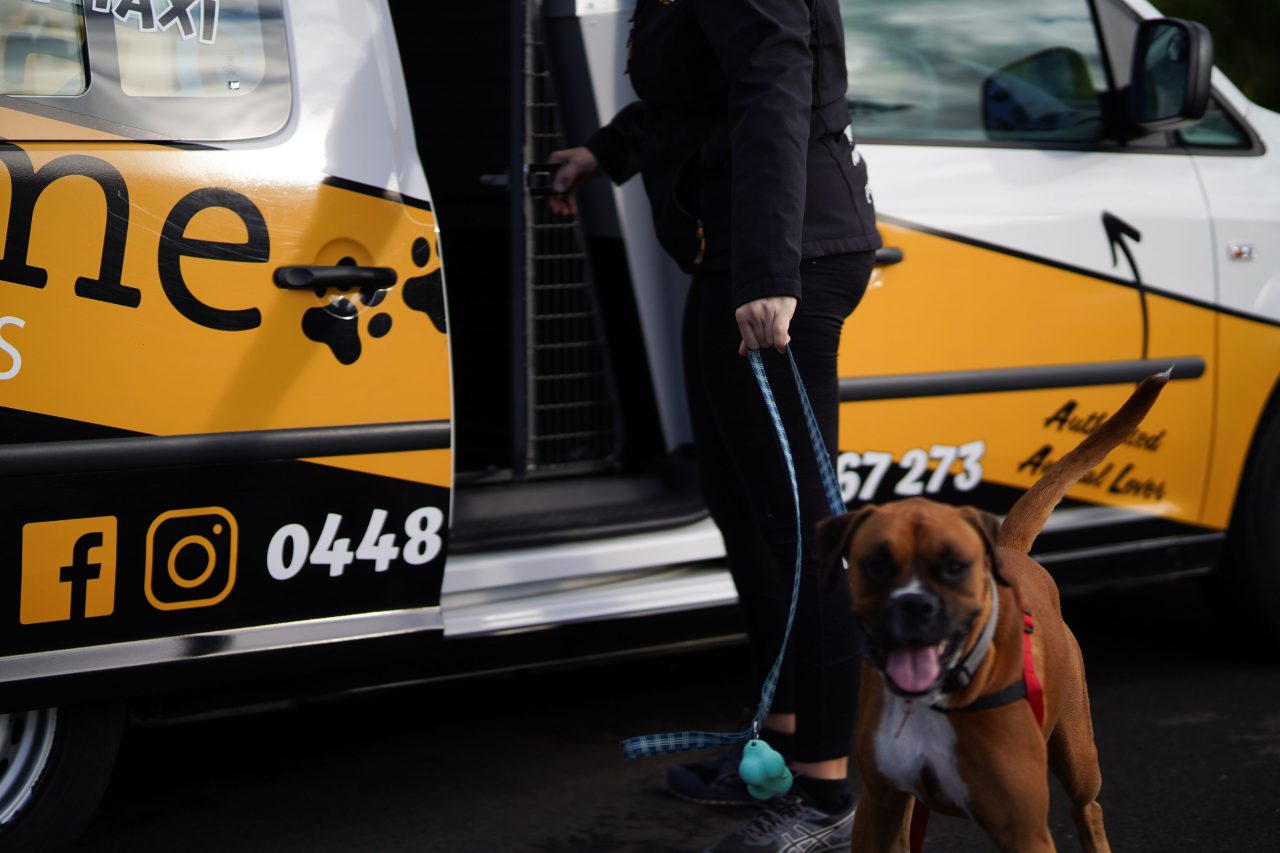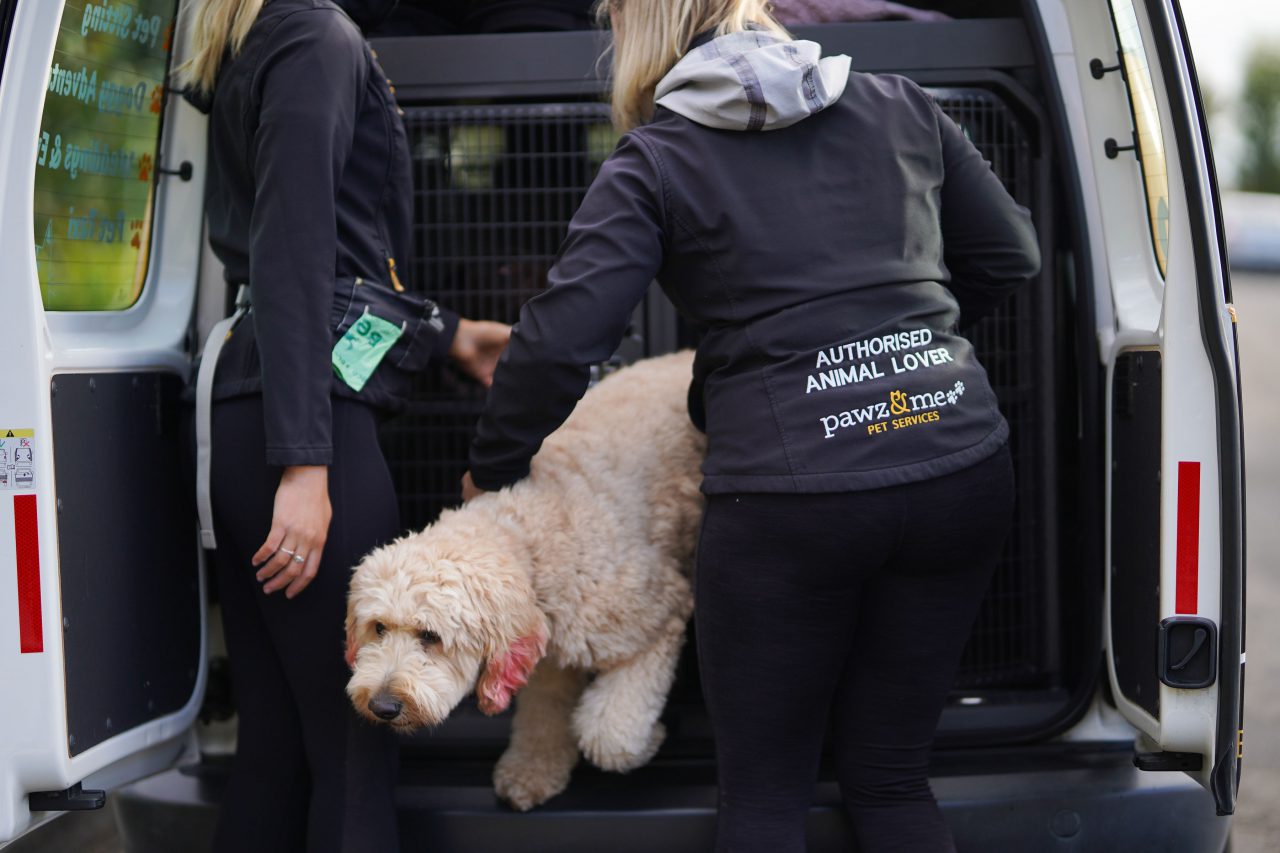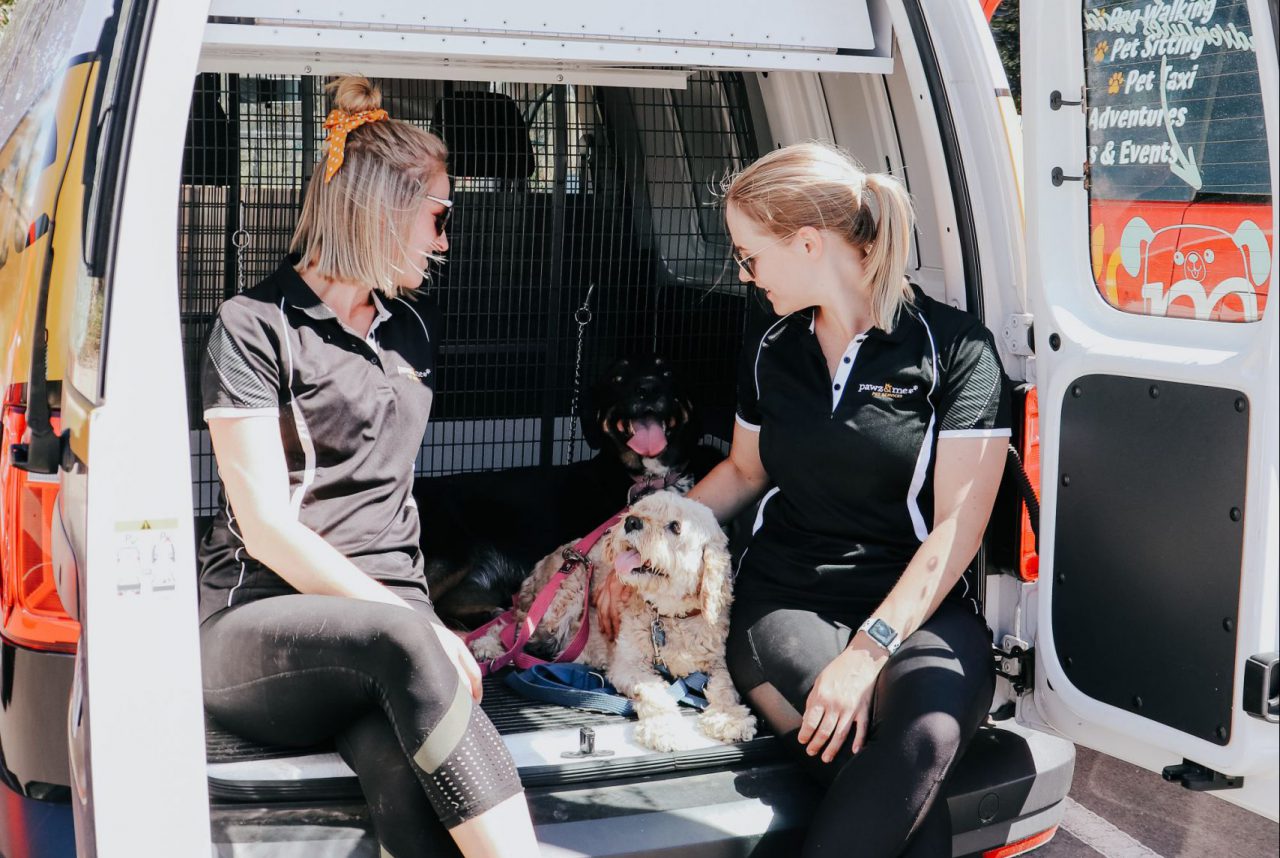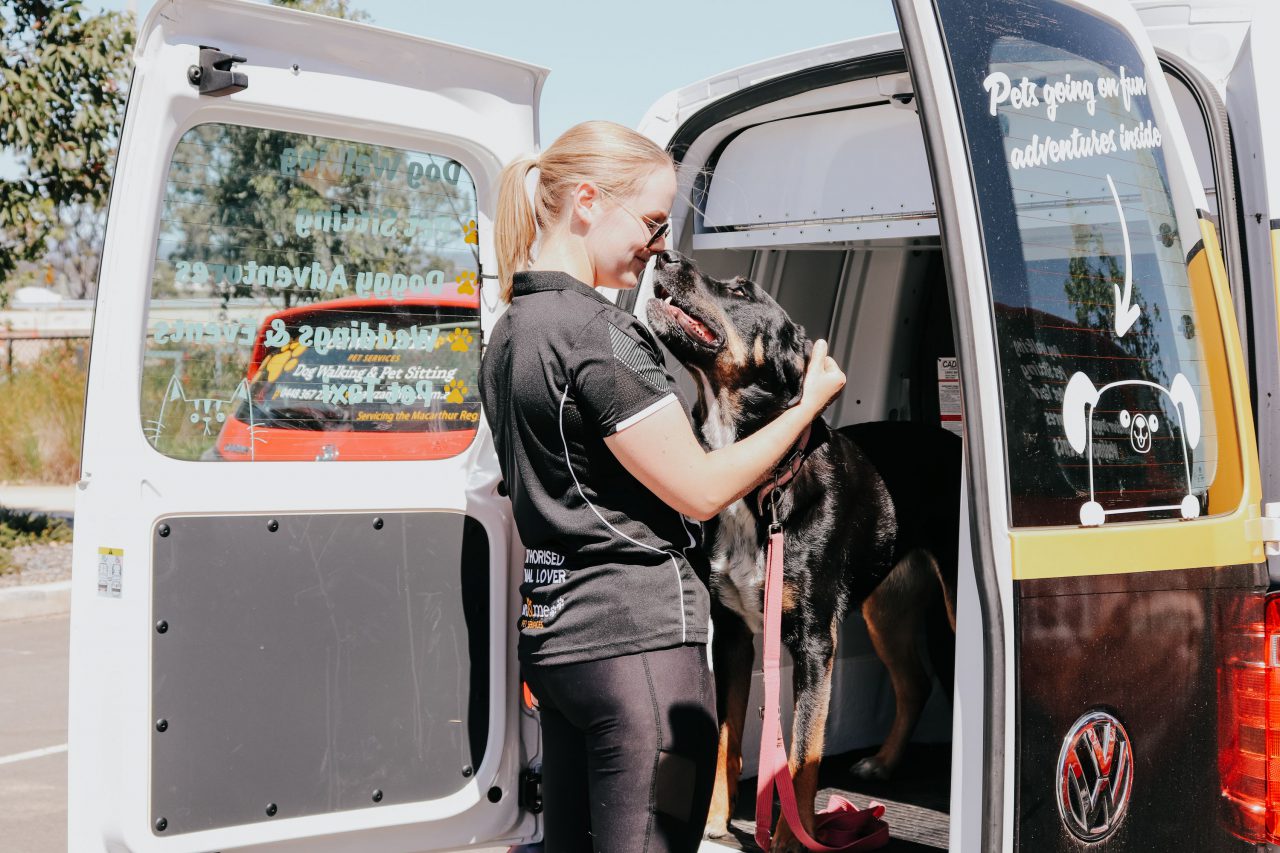Dogs make for great travel buddies, but before you grab the keys and pack the car, there are a few things you can do to make sure your dog’s car ride is safe and comfortable.
Firstly, it’s useful to know where travel anxiety in most dogs stems from. Generally, it’s the unfamiliarity of it all! Dogs that aren’t used to going on car rides may be stressed by the odd feeling of riding in a car that s humans are so used to. Cars usually have their own smell, and there’s also the sound of the engine, the vibrations of the floor, and seeing everything whizzing past at a fast speed. For a dog who isn’t quite used to car travel, all of these things can make for a pretty anxiety-inducing experience for your furry friend.
So before you go planning a road trip for you and your best mate, try these simple tips to help make the journey as hassle-free as possible for both you and your tail-wagging passenger.

Help Your Dog Feel Comfortable in the Car
For many dogs, a vet visit is usually the first reason they get the chance to ride in the car. Therefore, many dogs make the association that car ride = a trip to the vet. This is called “classical conditioning”, and since many dogs don’t always love what happens at the vet, is it any wonder then, that getting in the car can often trigger stress and anxiety for so many dogs?
Other dogs may also become anxious in the car due to a previous bad experiences, such as being left alone or a frightening event like a car accident.
The good news is that if you start young, you can prevent your dog from ever developing negative associations (and the resulting stressful state of mind) with the car using a process called desensitization. And if you already have a dog that exhibits anxiety during their car ride, it is possible to modify that association using counter conditioning. The key with both desensitization and counter conditioning is recognizing that it’s not a race. Go slowly. Success is more likely with baby steps.
Desensitizing a Puppy to Enjoy Riding in the Car (Prevention)
- Start with the car parked and turned off. Make sure the surrounding environment is familiar, calm and quiet to mitigate any stress or anxiety in your dog during the prevention process.
- Sit next to your dog in the area you plan on having them regularly ride (such as the back seat or cargo area with proper travel safety restraints. Remember: fines apply if your dog is not restrained properly whilst travelling in a vehicle). Give your dog pats, praise, treats – whatever they love! Do this for just a few minutes at a time.
- After a few sessions in the same area as your dog, introduce being behind the wheel while your dog is still in their area. You can pass treats back to them and praise them whenever they are quiet and calm. This is a great opportunity for using a treat or toy they love to build a positive association with staying calm and being further away from you while in the car.

Counter Conditioning Your Anxious Dog to Feel Better About the Car (Treatment)
You’ll notice that the following counter conditioning steps are very similar to the desensitization steps outlined in the process above. The biggest difference with counter conditioning is that your dog already has a negative association with being in the car versus a puppy who hasn’t built any associations (good or bad) when you start introducing them to the car. For this reason, you’ll want to focus on rewarding your dog’s choice to move towards the car in these steps.
Important: Don’t try to lure with a toy or treat or force them closer with leash pressure. Their confidence around the car will grow if they are given the choice to approach or get in the car, and that choice is rewarded with things they love. The more a choice is rewarded, the more they will choose to make it. Remember: patience is key!

Counter conditioning can take longer than desensitization, and you’ll want to work in smaller steps and at a slower progression through the steps. If you find your dog is showing significant signs of anxiety, it’s worth chatting to your vet or veterinary behaviourist early on to figure out which supplements or medications will help your dog remain as calm as possible during the counter conditioning process.
- Start Slow: Some dogs need to begin this process without even getting into the car. If your dog has extreme anxiety and starts to stress before they even get in the car, begin outside of the parked car. Any time they look at the car, offer them a treat and praise! If they take a step towards the car, treat and praise. Or if they like toy play, play some tug-of-war with them in the vicinity of the car. Do this for just a few minutes the first time, or even just a few seconds depending on how stressed they are around the car. Do this daily, or every other day, for a few weeks. This will help them to associate positive experiences and emotions when in the vicinity of the car.
- Build Confidence: You can then have the car door open and repeat this process of giving high-value rewards for looking at and moving towards the car. You don’t want to force them into the car — instead, you want them to choose to go towards the open door on their own and then reward them. The car is an interesting new place, so naturally they’re going to be curious about what’s inside!
- Reward Continued Progress: Once they’ve shown more confidence in approaching the open door, you can add in the step of jumping in (or being picked up and placed in the car, if they’re small enough). Give lots of praise and a high-value treat when they put their feet in the car, and then let them jump out (or take them out) immediately if they’d like. Practice this step until your dog is showing confidence in getting in the car and doesn’t show signs of immediately wanting to get out.
- Sit in The Car With Your Dog: With the car parked, go into the back seat (or cargo area) with your dog. Pat them, praise them, and give them high-value treats (like little pieces of cheese, chicken, or whatever you know they really love).
- Build Duration: Gradually increase the amount of time you’re both spending in the car. Consider feeding them regular meals in the car, or sit with them calmly giving praise and pats.
What you’re trying to do here is change your dog’s previously bad association to a positive one. All of your dog’s favourite things are now happen in or around the car, and they’ll develop positive associations with the vehicle in no time.

Car Sickness in Dogs
As we mentioned earlier, riding in a car can be a pretty alarming experience for dogs. The unfamiliar sounds and whizzing of the world going past them can cause dogs to become car sick, which often leads to travel anxiety. Puppies are generally more affected by motion sickness, but most tend to grow out of it around one year old.
Feeling sick whenever they are in the car doesn’t help to build a positive association for your dog, which contributes to the anxiety they feel when they have to go for a car ride. You can follow these simple steps for keeping your pooch’s tummy at ease and educing the likelihood of travel sickness for your dog’s next car ride:
- Keep the temperature inside the car cool.
- Lower the windows for fresh air.
- Limit your dog’s food and water for a few hours before the trip.
- Consult your vet about motion sickness medication or anti-anxiety medication.
- Exercise your dog about twenty minutes before your trip to decrease stress.
- Spray dog pheromones in the car. Available as collars, diffusers, and sprays, these pheromones mimic the odour of a nursing mother dog and relax even adult dogs.
Follow these simple tips and procedures, and your dog should be jumping for joy during your next car ride in no time!
